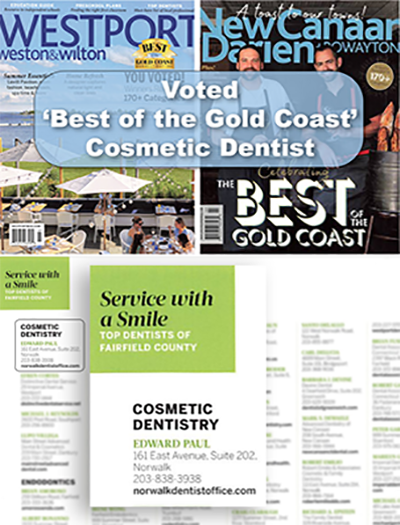Cancer treatment causes bone necrosis
A study of patients at the Long Island Jewish (LIJ) Medical Center found that long-term use of biophosphonates—a treatment for advanced cancer and for osteoporosis in post-menopausal women—is linked to osteonecrosis of the jaw.
The patients developed necrosis after normal bone trauma such as tooth extractions. Researchers stressed that monitoring the dental health of these patients can reduce complications through early diagnosis and treatment.
Bad breath? Eat some yogurt.
There’s now one more argument for eating yogurt. According to researchers at Tsurumi University in Yokohama, Japan, eating yogurt may reduce bacteria in the mouth and freshen breath.
The research—which was presented at a meeting of the International Association for Dental Research in Baltimore, Md.— found that eating six ounces of yogurt a day reduced levels of odor- causing compounds, such as hydrogen sulfide, in the mouth. In addition, levels of plaque and the gum disease gingivitis were lowered.
Researchers believe the results suggest that the active bacteria in yogurt—specifically Streptococcus thermophilus and Lactobacillus bulgaricus—may have a beneficial effect on odor-causing bacteria in the mouth.
Gum disease and stroke—the chicken or the egg?
According to a five-year study completed at Columbia University, oral bacteria associated with gum disease may cause stroke or a heart attack.
After taking ultrasounds, researchers discovered that high levels of gum disease-related bacteria were associated with thickening of the carotid artery. Other oral bacterium sampled did not have a relationship to hardened arteries.
Lead researcher, Mose Desvarieux, MD, Ph.D., cautions that the results don’t guarantee that the association is causative. He said in a press release: “We don’t know which one came first…the only way we can know that is by following them up and trying to see whether the carotid artery continues to thicken.”
The study appeared in the Journal of Circulation (March 2005).
Brushing 101?
According to a study published in Caries Research (January 2006), low-income students may benefit from teacher-supervised tooth brushing during the school day. Children in socially deprived areas of the U.K. begin brushing the teeth at a later age, use less fluoride- containing toothpaste, and have a higher incidence of dental decay. Students in London who participated in a study that measured the benefit of teacher-supervised brushing following lunch experienced a reduction in tooth decay
Antibiotics ineffective in patients with periodontitis
Periodontitis may reduce the effectiveness of antibiotics used for the prevention of recurrent myocardial infarcts, according to a study in the journal Artherosclerosis (January 2006). Researchers found that the risk for recurrent, acute cardiovascular events was up to fivefold for patients who were less than age 65 and had periodontitis.
Periodontal/cardiovascular link
The treatment of gum disease may reduce the risk for cardiovascular disease. During a clinical trial, researchers found strong evidence linking periodontal disease to an increased risk for developing blood clots, which could lead to the onset of heart attack and stroke. Participants’ blood-clot risk factors and signs of inflammation fell when gum infection was eradicated, suggesting a commensurate reduction in the future risk for heart attacks and clots. The paper, entitled “Full-mouth Tooth Extraction Lowers Systemic Inflammatory and Thrombotic Markers of Cardiovascular Risk,” appeared in the Journal of Dental Research (January 2006).
Wine prevents tooth loss
 A study in the Journal of Dental Research (March 2006) found that wine might prevent tooth loss. The antioxidants, called polyphenols, found in red wine and many fruits and vegetables, help to reduce the inflammation that arises from periodontitis. Researchers believe that polyhenois could form the basis of a new approach to treating gum diseases.
A study in the Journal of Dental Research (March 2006) found that wine might prevent tooth loss. The antioxidants, called polyphenols, found in red wine and many fruits and vegetables, help to reduce the inflammation that arises from periodontitis. Researchers believe that polyhenois could form the basis of a new approach to treating gum diseases.
Student using tobacco risk lesions
 According to research presented at the 83rd General Session of the International Association for Dental Research (IADR), student athletes continue to use tobacco products despite health risks. The study found that almost 40 percent of the students who had used tobacco had an oral lesion. Male athletes were more likely to use tobacco.
According to research presented at the 83rd General Session of the International Association for Dental Research (IADR), student athletes continue to use tobacco products despite health risks. The study found that almost 40 percent of the students who had used tobacco had an oral lesion. Male athletes were more likely to use tobacco.
Tooth-loss link quantified
There is a strong, progressive association between tooth loss and heart disease, according to report titled, “Tooth Loss and Heart Disease: Findings from the Behavioral Risk Factor Surveillance System,” published in the American Journal of Preventive Medicine (December 2005). Researchers at the Centers for Disease Control and Prevention found that there was a 21 percent increase in the incidence of heart disease among patients missing one to five teeth, a 60 percent increase among patients missing six to 31 teeth, and an 81 percent increase in heart disease among patients with no remaining teeth.
Earlier treatment reduces cost
Periodontal disease has a direct relationship to increased care costs for several chronic diseases, according to a study jointly conducted by Aetna and the Columbia University College of Dental Medicine. The study found that earlier treatment for periodontal disease resulted in lower medical costs for diabetes, coronary artery disease, and cerebrovascular disease (CVD) or stroke.
Cholesterol monitoring for periodontal patients?
A study in the Journal of Lipid Research (December 2005) suggests that changes in the plasma lipoprotein profile of people with severe periodontitis may contribute to a higher risk for heart disease or stroke. Generalized aggressive periodontitis was related to elevated levels of small-dense LDL, which is associated with a three- to six-fold increased risk for heart disease and stroke. The study indicates that the plasma lipoprotein profiles of periodontal patients should be monitored for changes.

 Click or Scan Code
Click or Scan Code